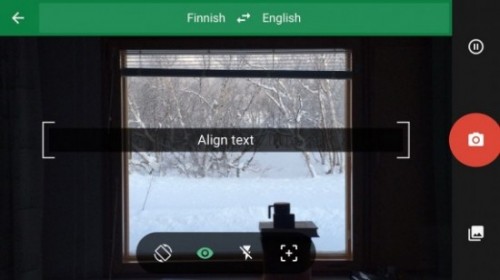Ars Bioarctica Residency Blog, Week 1: Toward Translation
 It’s been one week since arriving in Kilpisjärvi for the Ars Bioarctica residency. Given the occasion, it’s a good time to recount my initial experiences and discuss the focus of this residency: to translate Arctic weather patterns into sensory experiences.
More specifically, I’m interested in framing a phenomena called Arctic haze as a hyperobject*. Arctic haze is the seasonal accumulation of air pollutants during the polar night that forms a reddish brown haze during the onset of spring. While collecting weather data about the Arctic haze, I'll be exploring methods for translating this information into a bodily experience.
It’s been one week since arriving in Kilpisjärvi for the Ars Bioarctica residency. Given the occasion, it’s a good time to recount my initial experiences and discuss the focus of this residency: to translate Arctic weather patterns into sensory experiences.
More specifically, I’m interested in framing a phenomena called Arctic haze as a hyperobject*. Arctic haze is the seasonal accumulation of air pollutants during the polar night that forms a reddish brown haze during the onset of spring. While collecting weather data about the Arctic haze, I'll be exploring methods for translating this information into a bodily experience.
 As I write this post, I’m staring outside my window—composed of two thick casement panels approximately two metres by two metres—which shields me from the extreme conditions outside. According to the Finnish Meteorological Institute, the current temperature outside is -28ºC (-18ºF), but with the wind it “feels like -35ºC” (-31ºF).
It is 2:30pm and the sun is setting. Google tells me the Kilpisjärvi Biology Station is located at 69º03’N; 20º05’E, a full 3º North of the Arctic Circle. Having only lived in warm weather climates and, prior to this residency, only experienced brief encounters with freezing temperature, I can say that, to me, this climate is alien in the fullest sense.
As I write this post, I’m staring outside my window—composed of two thick casement panels approximately two metres by two metres—which shields me from the extreme conditions outside. According to the Finnish Meteorological Institute, the current temperature outside is -28ºC (-18ºF), but with the wind it “feels like -35ºC” (-31ºF).
It is 2:30pm and the sun is setting. Google tells me the Kilpisjärvi Biology Station is located at 69º03’N; 20º05’E, a full 3º North of the Arctic Circle. Having only lived in warm weather climates and, prior to this residency, only experienced brief encounters with freezing temperature, I can say that, to me, this climate is alien in the fullest sense.
"I can think and compute climate…but I can’t directly see or touch it. The gap between phenomena and thing yawns open, disturbing my sense of presence."
–Timothy Morton
Inside the station, which is equipped with a research lab, library, kitchen, sauna, dormitories and offices, there are many Finnish texts—as to be expected—and, while there is enough English to navigate this residency, I'm using various translators to further understand this new environment. One of these happens to be GoogleTranslate: There will be more in the coming days and weeks, but for now these are my starting resources for this residency:
There will be more in the coming days and weeks, but for now these are my starting resources for this residency:
- Timothy Morton’s Ecology without Nature (2007) Investigates how artists and writers use the idea and term ‘nature’ within art and its implications.
- Augmented Ecologies from Theun Karelse Artist interested in the role of data and media systems in understanding the Anthropocene.
- Conversations with past residents Shannon Williamson and Josh Crompton. Here is Shannon's blog entry. Their experience here in 2014 offered a wealth of conceptual and practical waypoints for navigating the Arctic.
- Caroline Jones’ Senses (2005). An article focusing levels of mediation and perception
- Richard Long A classic for understanding walking as an art practise and means of discovery.
- The AMAP Assessments from 2006 and 2015. The Arctic Monitoring and Assessment Programme (AMAP) releases scientific assessments about changing conditions in the Arctic. 2006 focuses on Arctic Haze and Acidifying Pollutants, while 2015 focuses on Black Carbon.
- EMEP database The European Monitoring and Evaluation Programme (EMEP) has a database within climate data that dates as far back as the 1970’s, from what I have seen. This website is operated by the Norwegian Institute for Air Research (NILU).
< > < > < > < > < > < > < >
*hyperobject is a term coined by Timothy Morton in The Ecological Thought to describe a thing that extends beyond our typical definition of an object. According to Morton, hyperobjects are, “things that are massively distributed in time and space relative to humans” (2013, p1). He provides several examples, including a black hole, a biosphere, the the sum of all nuclear materials, styrofoam (due to its extremely long degradation period), and climate change.









